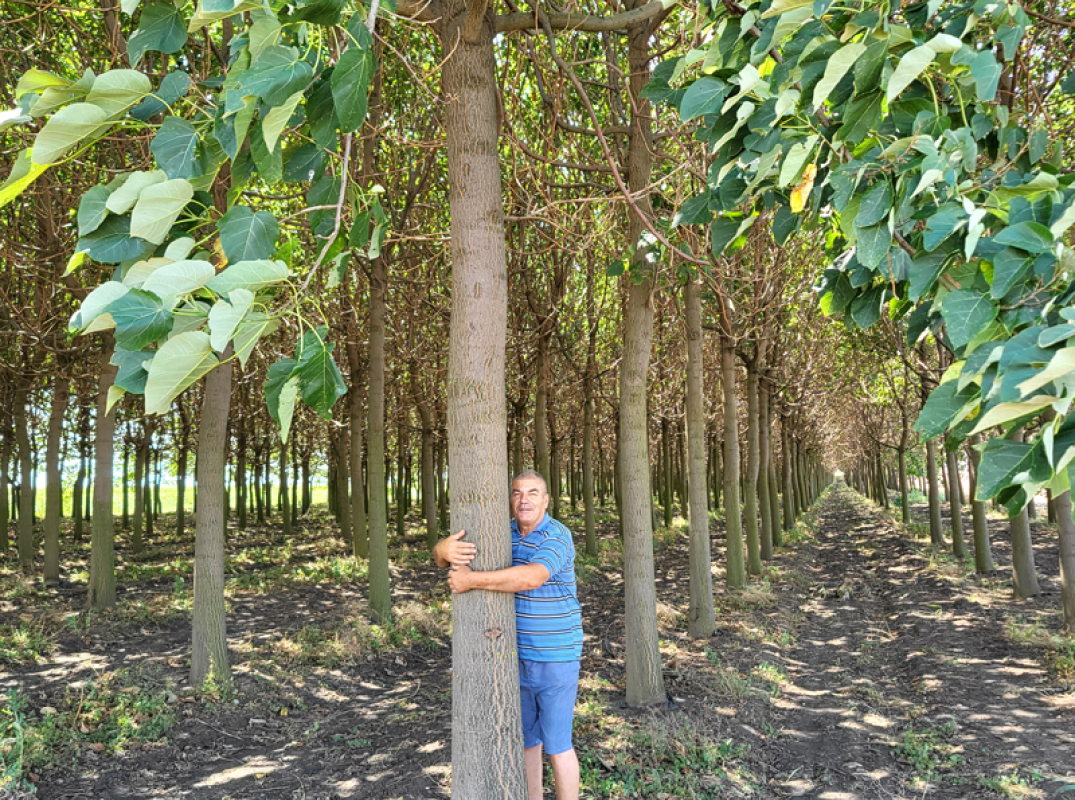How to grow a successful paulownia plantation: step-by-step instructions

Paulownia, often referred to as the "miracle tree," is a top choice for plantations worldwide due to its rapid growth, valuable timber, and versatility. However, growing a successful Paulownia plantation requires meticulous planning, proper techniques, and ongoing care. This step-by-step guide provides comprehensive instructions for establishing and managing a thriving Paulownia plantation, ensuring maximum productivity and profitability.
1. Choosing the Right Variety
The foundation of a successful Paulownia plantation lies in selecting the appropriate species or hybrid. Different varieties are suited for various purposes, climates, and soil types.
- Consider the Purpose: If your goal is timber production, opt for hybrids like Paulownia Shan Tong or Paulownia Energy, which are known for their straight trunks and high-quality wood. For bioenergy, species with high biomass yield, such as Paulownia elongata, are more suitable.
- Local Adaptability: Research the species that perform best in your region's climate. Some varieties, such as Paulownia fortunei, are better suited for warm and humid environments, while others like Paulownia tomentosa thrive in temperate zones.
By selecting the right variety, you ensure the trees are well-suited to the local environment and aligned with your plantation goals.
2. Selecting and Preparing the Land
The success of your plantation depends heavily on the quality of the land and its preparation. Proper site selection and groundwork lay the foundation for healthy growth.
- Site Selection: Choose a location with well-drained soil, a pH level between 5.5 and 8.5, and adequate sunlight exposure. Avoid waterlogged or overly rocky areas.
- Land Preparation:
- Conduct soil tests to identify nutrient deficiencies and adjust with fertilizers or organic matter.
- Deep plowing helps aerate the soil and promote root penetration.
- Remove weeds and debris to reduce competition for resources.
Proper preparation ensures that the land provides optimal support for the rapid growth of Paulownia trees.
3. Planting the Saplings
The planting stage is crucial for establishing a healthy and productive plantation. Timing, spacing, and sapling quality are key factors to consider.
- Timing: Plant saplings during the early spring or fall to allow them to establish roots before extreme weather conditions.
- Spacing: For timber production, maintain a spacing of 4x4 meters between trees. If the plantation is intended for biomass, closer spacing of 3x3 meters can be used to maximize yield.
- Sapling Quality: Purchase certified disease-free saplings from a reputable nursery. This ensures consistent growth and reduces the risk of pest or disease outbreaks.
Proper planting techniques minimize stress on young trees and set the stage for vigorous growth.
4. Establishing a Watering and Irrigation System
Paulownia trees require consistent watering during their early growth stages to develop a strong root system. Adequate irrigation is essential for ensuring survival and healthy growth.
- Initial Watering: Water saplings immediately after planting and maintain consistent moisture levels during the first two years. This is particularly important in regions with low rainfall.
- Efficient Systems: Drip irrigation is highly recommended as it conserves water while ensuring it reaches the root zone. This method also reduces the risk of waterborne diseases.
A well-planned irrigation system ensures that water needs are met efficiently, especially during critical growth periods.
5. Nutrient Management
Providing the right nutrients at the right time is essential for rapid growth and high yields. Regular soil testing and targeted fertilization play a vital role in nutrient management.
- Early Stages: Apply nitrogen-rich fertilizers to promote leaf and shoot development during the first year.
- Mature Stages: Transition to phosphorus and potassium-based fertilizers to strengthen the wood and support overall health.
- Organic Boosts: Incorporate organic compost or manure to improve soil structure and nutrient availability.
Proper nutrient management supports robust tree development and maximizes productivity.
6. Pest and Disease Control
Pests and diseases can significantly impact the health and yield of your plantation. Early detection and proactive management are essential.
- Common Threats: Paulownia plantations are susceptible to pests like weevils and leaf-eating insects, as well as diseases such as witches' broom. Regular inspections are critical to identify early signs.
- Preventive
Measures:
- Use disease-resistant saplings to reduce vulnerability.
- Implement integrated pest management strategies, including biological controls and eco-friendly pesticides.
Effective pest and disease control ensures a healthy plantation and minimizes losses.
7. Pruning and Maintenance
Pruning and maintenance are vital for ensuring high-quality timber and healthy tree growth. These practices also improve airflow and reduce the risk of disease.
- Pruning: Remove lower branches during the first few years to encourage the development of a straight, knot-free trunk. Perform pruning during the dormant season to reduce stress on the trees.
- Weed Control: Regularly remove weeds to prevent competition for nutrients and water. Mulching can be used to suppress weed growth.
Routine maintenance optimizes tree health and supports uniform growth across the plantation.
8. Harvesting and Regeneration
Paulownia trees are ready for harvest relatively quickly compared to other hardwoods. Proper harvesting techniques and regeneration strategies ensure ongoing productivity.
- Harvest Timing: For timber, trees can be harvested between 5–7 years when the trunk diameter reaches optimal size. For biomass, shorter cycles of 2–3 years are common.
- Regeneration: After harvesting, Paulownia regenerates from the stump, allowing multiple harvest cycles without replanting. Coppicing encourages rapid regrowth and sustains productivity.
Strategic harvesting ensures high yields while maintaining the plantation’s long-term viability.
Conclusion
Growing a successful Paulownia plantation is both an art and a science. By following these step-by-step instructions, you can establish a thriving plantation that provides significant economic and environmental benefits. From selecting the right variety and preparing the land to ongoing maintenance and harvesting, each stage plays a critical role in achieving success. Paulownia’s rapid growth and versatile applications make it an ideal choice for farmers and investors looking to embrace sustainable and profitable agriculture.

